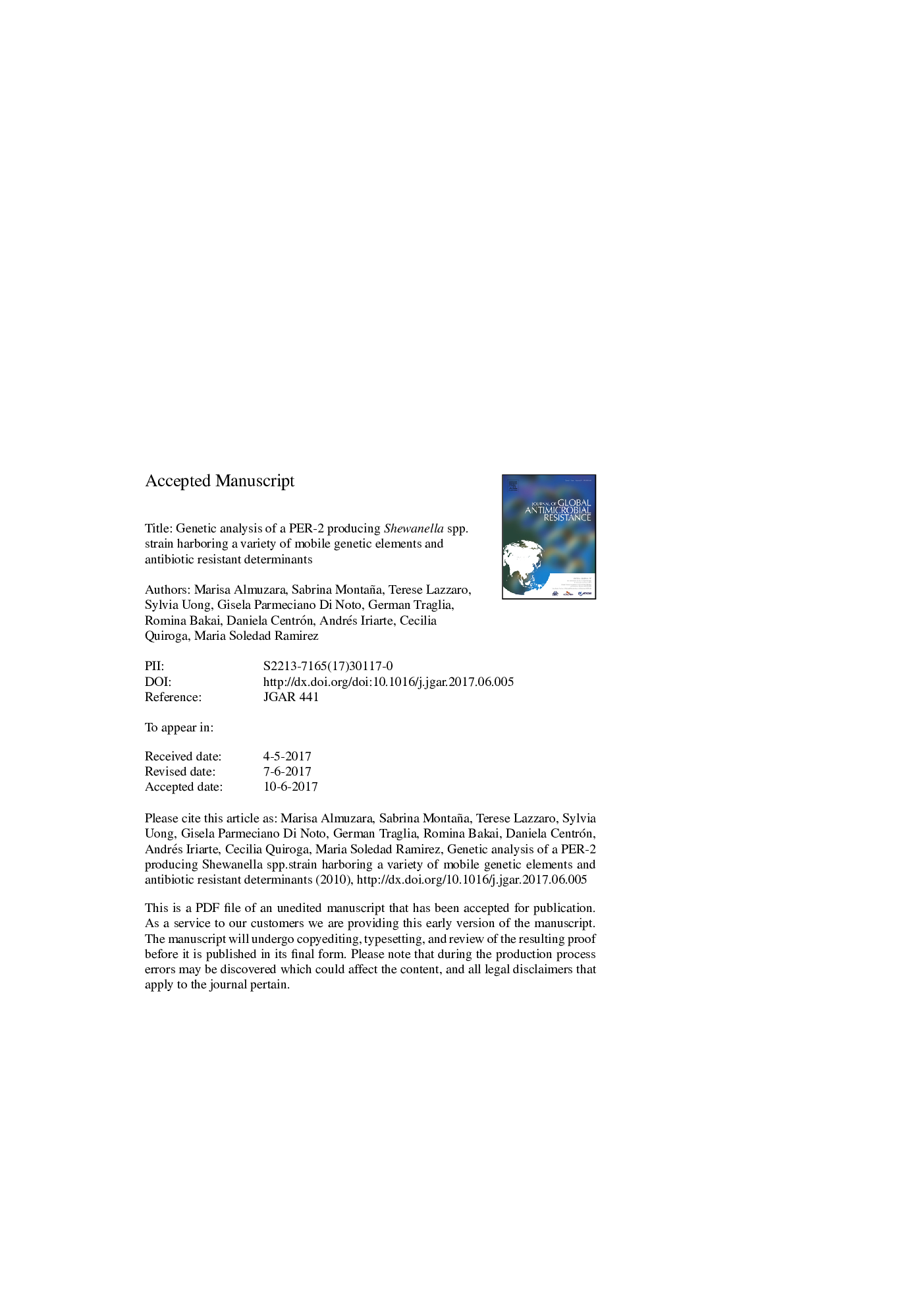| Article ID | Journal | Published Year | Pages | File Type |
|---|---|---|---|---|
| 8746343 | Journal of Global Antimicrobial Resistance | 2017 | 19 Pages |
Abstract
The objective of this study was to investigate the molecular mechanisms explaining the multidrug-resistant (MDR) phenotype found in a novel clinical Shewanella sp. strain (Shew256) recovered from a diabetic patient. Whole-genome shotgun sequencing was performed using Illumina MiSeq-I and Nextera XT DNA library. De novo assembly was performed with SPAdes. RAST Server was used to predict the open-reading frames and the predictions were confirmed using BLAST. Further genomic analysis was carried out using average nucleotide identity (ANI), ACT (Artemis), OrthoMCL, ARG-ANNOT, ISfinder, PHAST, tRNAscan-SE, plasmidSPAdes, PlasmidFinder and MAUVE. PCR and plasmid extraction were also performed. Genomic analysis revealed a total of 456 predicted genes unique to Shew256 compared with other Shewanella genomes. Moreover, the presence of different resistance genes, including blaPER-2, was found. A complex class 1 integron containing the ISCR1 gene, disrupted by two putative transposase genes, was identified. Furthermore, other resistance genes, a transposon containing aph(3â²), insertion sequences, phages and non-coding RNAs were also found. In conclusion, evidence of acquisition of resistance genes and mobile elements that could explain the MDR phenotype were observed. This Shewanella sp. represents a prime example of how antibiotic resistance determinants can be acquired by uncommon pathogens.
Related Topics
Life Sciences
Immunology and Microbiology
Applied Microbiology and Biotechnology
Authors
Marisa Almuzara, Sabrina Montaña, Terese Lazzaro, Sylvia Uong, Gisela Parmeciano Di Noto, German Traglia, Romina Bakai, Daniela Centrón, Andrés Iriarte, Cecilia Quiroga, Maria Soledad Ramirez,
